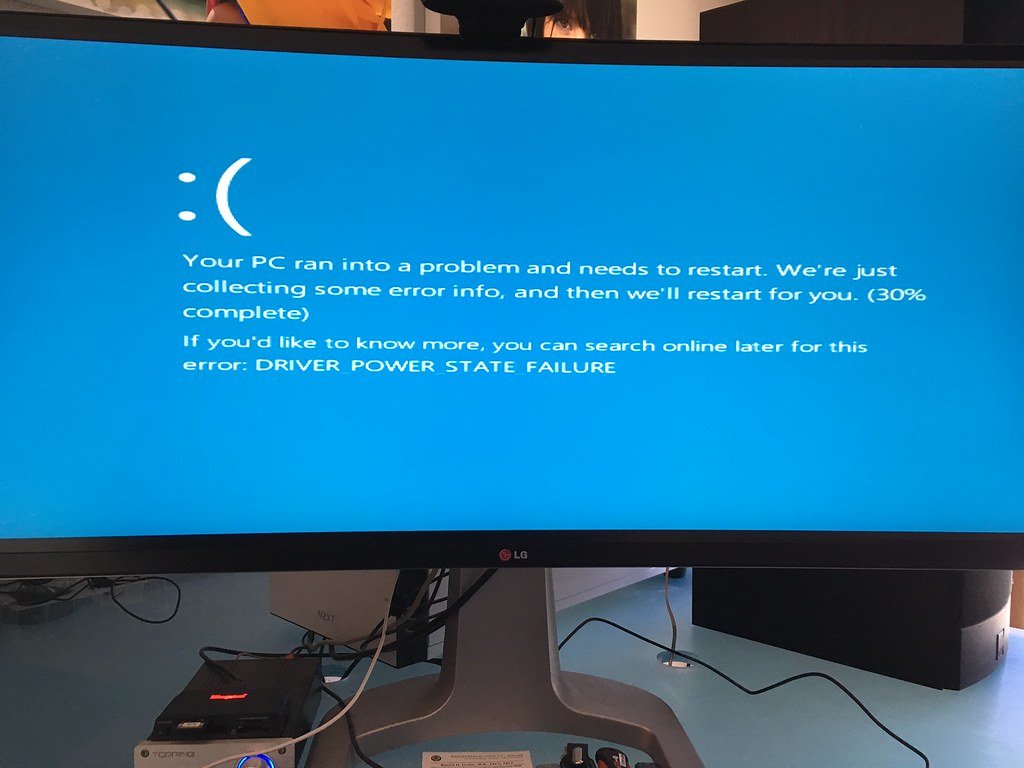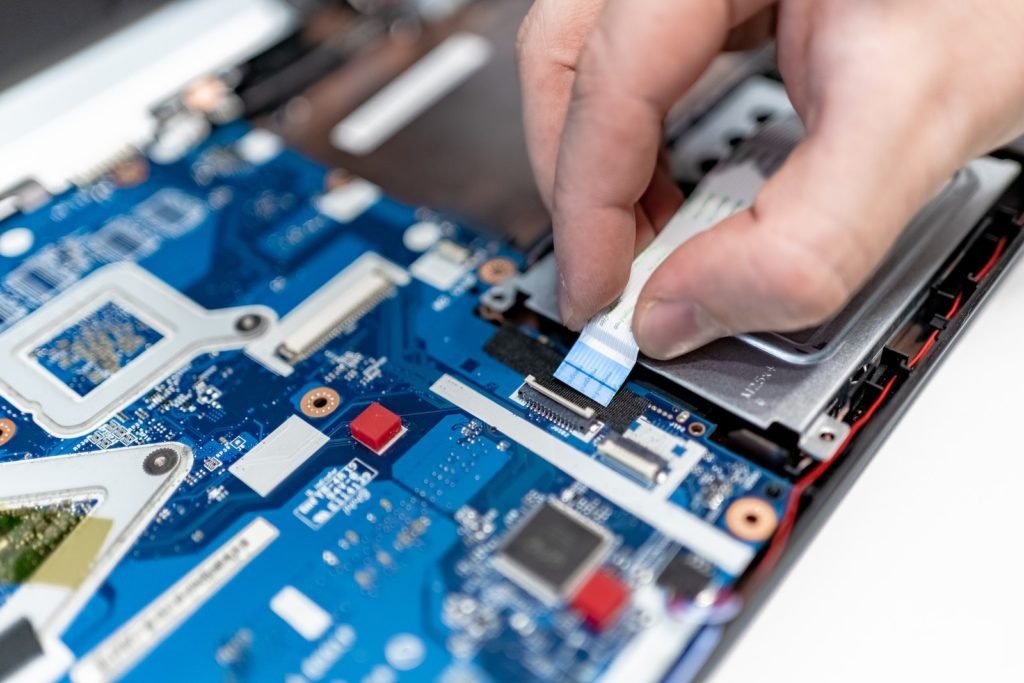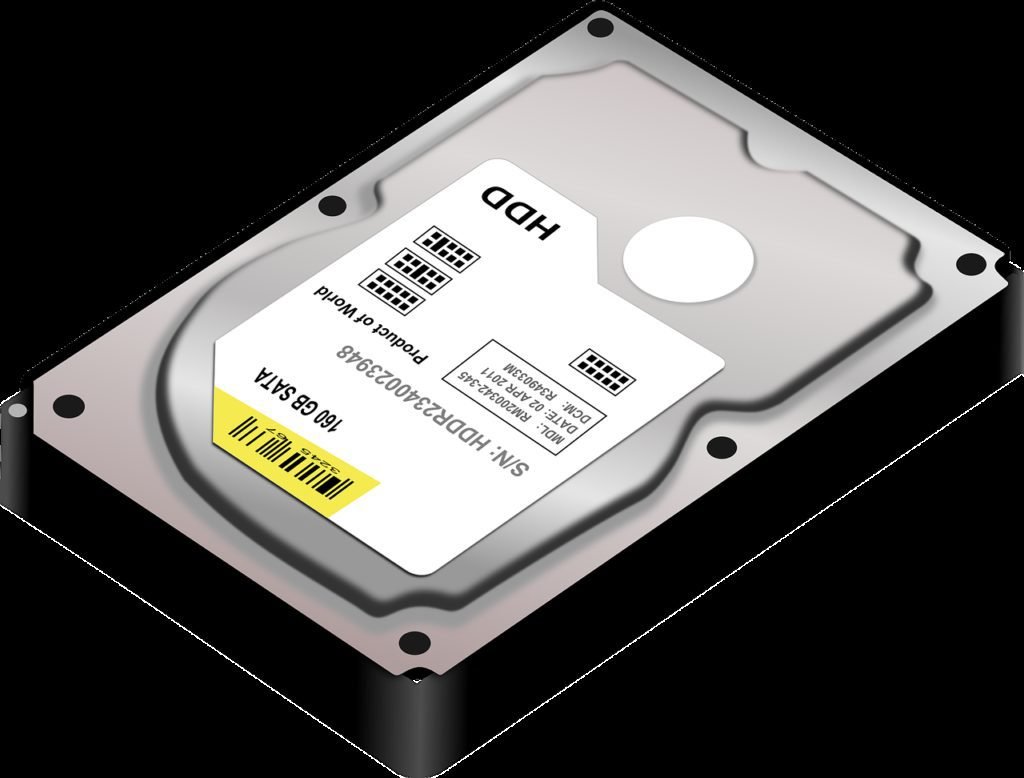If your computer keeps blue screening, there are a few things you can do to try and fix the problem. First, try restarting your computer. If that doesn’t work, try restarting your computer in safe mode. If that still doesn’t work, you may need to reinstall your operating system.
Understanding the Blue Screen of Death: Causes and Solutions
When your Computer Keeps Blue Screening, it can be a frustrating experience. The blue screen of death (BSOD) is usually a sign of a serious hardware or software problem. In this article, we’ll show you some of the common causes of BSODs and how to fix them.
One of the most common causes of BSODs is a faulty hardware driver. When a driver is not properly configured for your hardware, it can cause your computer to crash. To fix this, you’ll need to update the driver. You can do this manually by going to the manufacturer’s website and downloading the latest driver, or you can use a driver update tool like Driver Easy to do it automatically.
Another common cause of BSODs is a corrupted registry. The registry is a database that stores important information about your computer’s configuration. If it becomes corrupt, it can cause your computer to crash. To fix this, you’ll need to use a registry cleaner to scan and repair any errors in your registry.
If you’re still having problems, it could be a hardware issue. One of the most common hardware issues that can cause BSODs is a faulty RAM module. If you suspect that your RAM is the problem, you can test it by running a memory test program. If the test finds errors in your RAM, you’ll need to replace the faulty module.
Hopefully, this article has helped you to understand some of the common causes of BSODs and how to fix them. If you’re still having problems, we recommend contacting a computer technician for further assistance.
Troubleshooting Common Blue Screen Errors

When your computer keeps blue screening, it can be a frustrating experience. There are a few things you can do to troubleshoot the issue and try to get your computer up and running again.
First, you should check to see if there are any new updates available for your operating system or drivers. Sometimes, blue screens can be caused by outdated software or drivers. Updating your software and drivers may help resolve the issue.
If there are no updates available, or if updating doesn’t help, you can try restoring your computer to an earlier point in time. This can be done by going to the control panel and selecting “System Restore.” Choose a date when your computer was working properly, and restore your system to that point. This may help fix the blue screen issue.
If neither of these solutions works, you may need to contact a computer technician for further assistance. They will be able to diagnose the issue and help you get your computer up and running again.
Steps to Take When Your Computer Keeps Blue Screening

If your computer keeps blue screening, it can be a frustrating experience. But don’t worry, there are some steps you can take to fix the problem.
First, you’ll want to restart your computer in Safe Mode. To do this, simply turn off your computer and then turn it back on. As it’s booting up, press and hold the F8 key. This will bring up the Advanced Boot Options menu. Use the arrow keys to select Safe Mode and hit Enter.
Once your computer is in Safe Mode, you’ll want to run a virus scan. If you don’t have antivirus software installed, you can download Microsoft Security Essentials for free. Just run the program and follow the prompts to scan your computer for viruses.
If you don’t have any viruses, the next step is to check your computer’s hardware. In particular, you’ll want to check the RAM and the hard drive. To do this, you can use the Windows Memory Diagnostics tool. Just open the Start menu, type “memory” into the search box, and select “Windows Memory Diagnostics”.
Once the tool opens, just hit the “Restart now and check for problems” button. Your computer will restart and run a series of tests on your RAM. If it finds any problems, it will try to fix them automatically.
If the Windows Memory Diagnostics tool doesn’t find any problems, the next step is to check your hard drive. To do this, you can use the chkdsk command. Just open the Command Prompt (you can do this by opening the Start menu and typing “cmd” into the search box) and type the following command:
chkdsk /r
This will scan your hard drive for errors and try to fix them.
If your still Computer Keeps Blue Screening, the next step is to update your drivers. Outdated drivers can cause all sorts of problems, so it’s important to keep them up to date. You can do this manually or you can use a program like Driver Booster to update all your drivers automatically.
If you’re still having problems with your Computer Keeps Blue Screening after attempting the previous steps, the next course of action is to try and restore your system. Restoring your computer essentially means reverting it to a previous state or version, which can often fix issues that have arisen over time.
There are several ways to restore your computer, depending on the specific operating system you’re using. Windows, for example, offers a built-in System Restore feature that allows you to roll back your computer to a previous date and time when it was functioning properly. This can often fix issues that have arisen due to recent software installations, updates, or changes to system settings.
If you’re using a Mac, you can use the Time Machine feature to restore your computer to a previous state. This feature allows you to automatically back up your files, applications, and system settings on a regular basis, so you can easily revert to an earlier version if needed.
It’s important to note that restoring your computer can also result in the loss of data or installed software, so it’s crucial to back up important files and applications before attempting to restore your system. Additionally, if restoring your computer doesn’t solve the issue, it may be necessary to seek professional help or replace hardware components that are causing the problem.
In summary, restoring your computer is often a last resort when troubleshooting blue screen issues, but it can be an effective solution for many problems. It’s important to carefully follow the instructions for your specific operating system and to back up important files before attempting a restore.
Tips for Preventing Future Blue Screen Crashes
If you’ve ever experienced a blue screen crash on your computer, you know how frustrating it can be. Your computer suddenly shuts down and you lose all your unsaved work. In some cases, you may even have to restart your computer to get it working again.
There are a few things you can do to help prevent blue screen crashes in the future. First, make sure that all your drivers are up to date. Outdated drivers can cause all sorts of problems, including blue screen crashes.
If you’re not sure how to update your drivers, you can usually find instructions on the manufacturer’s website.
Another thing you can do is create a backup of your important files. That way, if your computer does crash, you’ll at least have a backup of your most important data.
You can also try using a different computer to see if the problem is with your computer or with the program you’re trying to use. If the problem only happens on one computer, it’s likely that there’s a problem with that particular computer.
Finally, if you’re still experiencing blue screen crashes, you may want to contact a technical support specialist. They can help you troubleshoot the problem and get your computer up and running again.
Blue Screen of Death: How to Diagnose the Problem

If your computer has recently begun displaying the dreaded “blue screen of death” there are a few things you can do to try and diagnose the problem. In this article we’ll go over some of the basics of what can cause this error and how you can go about trying to fix it.
First, it’s important to understand that the blue screen of death is not necessarily indicative of a serious problem. In many cases it can be caused by a simple software issue that can be easily fixed. However, in other cases it can be caused by hardware problems that will require more work to fix.
If you’re seeing the blue screen of death it’s important to first try and restart your computer. In many cases this will resolve the issue and allow you to continue using your computer without any further problems.
If restarting your computer doesn’t fix the problem, the next step is to try and identify what is causing the blue screen of death. One of the most common causes is a driver issue. Drivers are the software that allow your computer to communicate with its hardware. If there is a problem with a driver it can cause your computer to crash.
If you think a driver may be causing the problem, you can try updating or reinstalling the driver. To do this you’ll need to know what kind of hardware you have and what drivers it uses. You can usually find this information in the documentation that came with your computer or by doing a search online.
Once you’ve updated or reinstalled the driver, restart your computer and see if the problem has been resolved. If it has, great! If not, there are a few other things you can try.
Another common cause of the blue screen of death is a problem with your computer’s hardware. This could be anything from a faulty RAM module to a failed hard drive. If you suspect a hardware problem is the cause of the blue screen, the best course of action is to take your computer to a qualified technician for diagnosis and repair.
Hopefully this article has helped you to understand what can cause the blue screen of death and how you can go about trying to fix it. Remember, in many cases the problem can be resolved by simply updating drivers or software, checking for malware, or repairing corrupt system files. It’s important to take a methodical approach to troubleshooting, and to try the simpler solutions first before moving on to more advanced techniques like system restores or hardware replacements.
Common Hardware and Software Issues That Cause Blue Screens

If you’ve ever experienced a blue screen on your computer, you know how frustrating it can be. Your computer suddenly shuts down and you’re left with a blue screen and an error message.
There are a number of hardware and software issues that can cause blue screens. In this blog post, we’ll go over some of the most common causes of blue screens and what you can do to fix them.
One of the most common causes of blue screens is a faulty driver. Drivers are the software that allows your operating system to communicate with your hardware. If a driver is not up to date or is not compatible with your operating system, it can cause blue screens.
Another common cause of blue screens is hardware failure. If your computer’s hardware is failing, it can cause blue screens. Hardware failure can be caused by a number of things, including overheating, power surges, and physical damage.
If you’re getting blue screens, it’s important to find out what is causing them. Once you know what is causing the blue screens, you can take steps to fix the problem.
If you think your computer’s drivers may be the cause of the blue screens, you can update them. To do this, you’ll need to find and download the latest drivers for your hardware. You can usually find drivers on the manufacturer’s website.
If you think hardware failure is the cause of the blue screens, you’ll need to have your computer repaired or replaced. If you have a warranty, you may be able to get the repairs covered. If you don’t have a warranty, you’ll have to pay for the repairs yourself.
If you’re getting blue screens, it’s important to find out what is causing them. Once you know what is causing the blue screens, you can take steps to fix the problem.
Recovering Data After a Blue Screen Crash

If your computer has blue screened, it means that there was a problem that caused Windows to shut down abruptly. This can be caused by a variety of things, but most often it’s caused by a hardware or software issue. If you’re not sure what caused the blue screen, there are a few things you can do to try and figure it out.
First, try and restart your computer. If it starts up without any issues, then the blue screen was likely caused by a one-time software issue. However, if your computer blue screens again, it’s likely that there’s a more serious problem.
If your computer keeps blue screening, the first thing you should do is check for any new software or hardware that you may have installed recently. If you’ve installed something new, try removing it and see if the blue screens stop.
If you haven’t installed anything new, the next step is to check your computer’s drivers. Drivers are the software that allows your hardware to communicate with Windows. Outdated or corrupt drivers can often cause blue screens. You can update your drivers manually or, if you’re not comfortable doing that, you can use a driver update tool.
If updating your drivers doesn’t fix the problem, the next step is to check your computer’s hardware. Often, blue screens are caused by faulty hardware, such as a bad hard drive or faulty RAM. If you suspect that your hardware is the problem, you can run a hardware diagnostic tool.
If you can’t figure out what’s causing the blue screens, the next step is to contact a technical support specialist. They can help you troubleshoot the problem and, if necessary, replace any faulty hardware.
Tools and Resources for Fixing Blue Screen Errors
Your computer screen turns blue and crashes unexpectedly. This is called the blue screen of death (BSOD) and it is a serious error. There are a few things you can do to try and fix the blue screen error.
First, you need to identify the error. The error message will often tell you what is causing the blue screen. If you can’t figure it out, you can use a free tool like WhoCrashed to analyze the crash dump and find out what is causing the blue screen error.
Once you know what is causing the blue screen, you need to update the drivers or software that is causing the error. You can often find the drivers on the manufacturer’s website or through Windows Update.
If updating the drivers doesn’t fix the blue screen error, you may need to replace the hardware that is causing the error. This could be a faulty hard drive, video card, or memory.
If you can’t fix the blue screen error, you can try to restore your computer to a previous working state. This is called a system restore and it will undo any recent changes that could be causing the blue screen error.
You can also use a recovery disc to restore your computer. This is a disc that comes with your computer that has the Windows operating system on it.
If you can’t fix the blue screen error, you will need to reinstall Windows. This will erase all of the data on your hard drive, so you will need to back up your data before you do this.
Once you have reinstalled Windows, you can try to install the drivers and software that caused the blue screen error. If you still can’t fix the blue screen error, you may need to replace the hardware that is causing the error.
When to Seek Professional Help for Blue Screen Issues
One of the most frustrating things that can happen to a computer user is the dreaded blue screen of death (BSOD). A BSOD can occur for a variety of reasons, ranging from hardware issues to software problems. When your computer crashes and displays a blue screen, it is often accompanied by a error message. These messages can be very helpful in pinpointing the cause of the BSOD. However, if you are not a technical user, it can be difficult to understand what the message is telling you. In these cases, it is best to seek professional help to troubleshoot the problem.
There are a few different ways to find a computer technician. If you have a warranty with a computer manufacturer or retailer, they may offer technical support. Otherwise, you can search for a local computer repair shop or an online computer support service.
When you contact a technician, be prepared to describe the problem and provide any error messages that you have received. The technician will likely ask you a series of questions to narrow down the problem. They may also ask you to run some diagnostic tests. Once the technician has enough information, they will be able to diagnose the problem and offer a solution.
In some cases, the problem may be resolved with a simple software update or configuration change. However, if the problem is hardware-related, it may require repairs or replacement. If the technician determines that the problem is not easily fixable, they may recommend replacing the computer.
If you are not comfortable with the idea of replacing your computer, you may be able to find a used computer that is compatible with your current hardware and software. You can also look into upgrading your current computer with new parts. This is often a cheaper option than buying a new computer, and it can extend the life of your current machine.
No matter what route you decide to take, be sure to back up your data before making any changes. This will ensure that you do not lose any important files if something goes wrong.
The Importance of Regular Maintenance to Avoid Blue Screen Crashes
We’ve all been there before. You’re working on your computer, and suddenly, everything goes dark and a blue screen appears with a cryptic error message. You’re experiencing a blue screen crash.
While a blue screen crash can be frustrating, the good news is that it can often be fixed with a simple software or driver update. The key is to regularly maintain your computer to prevent these types of crashes from happening in the first place.
Here are a few tips to help you avoid blue screen crashes:
Install updates for your operating system and software as soon as they’re available. These updates often include fixes for blue screen crashes.
Keep your computer clean and free of dust. Dust can cause your computer to overheat, which can lead to blue screen crashes.
Make sure you have adequate cooling for your computer. If your computer is overclocked, make sure you have adequate cooling for that as well.
If you’re a gamer, make sure you’re using the latest graphics drivers. These drivers are often optimized for the latest games and can help prevent blue screen crashes.
Regularly check for bad sectors on your hard drive. A bad sector can cause your computer to crash.
These are just a few tips to help you avoid blue screen crashes. By following these tips and keeping your computer up-to-date, you can help prevent these frustrating crashes from happening.
Now You Can Read News On sTech Pedia, Introducing: sTech News
You may be interested:
Computer Keeps Blue Screening, Computer Keeps Blue Screening, Computer Keeps Blue Screening, Computer Keeps Blue Screening, Computer Keeps Blue Screening, Computer Keeps Blue Screening, Computer Keeps Blue Screening, Computer Keeps Blue Screening, Computer Keeps Blue Screening, Computer Keeps Blue Screening, Computer Keeps Blue Screening, Computer Keeps Blue Screening, Computer Keeps Blue Screening, Computer Keeps Blue Screening, Computer Keeps Blue Screening, Computer Keeps Blue Screening, Computer Keeps Blue Screening, Computer Keeps Blue Screening, Computer Keeps Blue Screening, Computer Keeps Blue Screening, Computer Keeps Blue Screening, Computer Keeps Blue Screening, Computer Keeps Blue Screening, Computer Keeps Blue Screening, Computer Keeps Blue Screening, Computer Keeps Blue Screening, Computer Keeps Blue Screening, Computer Keeps Blue Screening, Computer Keeps Blue Screening, Computer Keeps Blue Screening, Computer Keeps Blue Screening, Computer Keeps Blue Screening, Computer Keeps Blue Screening, Computer Keeps Blue Screening, Computer Keeps Blue Screening, Computer Keeps Blue Screening, Computer Keeps Blue Screening, Computer Keeps Blue Screening, Computer Keeps Blue Screening, Computer Keeps Blue Screening, Computer Keeps Blue Screening, Computer Keeps Blue Screening, Computer Keeps Blue Screening, Computer Keeps Blue Screening, Computer Keeps Blue Screening, Computer Keeps Blue Screening, Computer Keeps Blue Screening, Computer Keeps Blue Screening, Computer Keeps Blue Screening, Computer Keeps Blue Screening, Computer Keeps Blue Screening, Computer Keeps Blue Screening, Computer Keeps Blue Screening, Computer Keeps Blue Screening, Computer Keeps Blue Screening, Computer Keeps Blue Screening, Computer Keeps Blue Screening, Computer Keeps Blue Screening, Computer Keeps Blue Screening, Computer Keeps Blue Screening, Computer Keeps Blue Screening, Computer Keeps Blue Screening, Computer Keeps Blue Screening, Computer Keeps Blue Screening, Computer Keeps Blue Screening, Computer Keeps Blue Screening, Computer Keeps Blue Screening, Computer Keeps Blue Screening, Computer Keeps Blue Screening, Computer Keeps Blue Screening, Computer Keeps Blue Screening, Computer Keeps Blue Screening, Computer Keeps Blue Screening, Computer Keeps Blue Screening, Computer Keeps Blue Screening, Computer Keeps Blue Screening, Computer Keeps Blue Screening, Computer Keeps Blue Screening,







